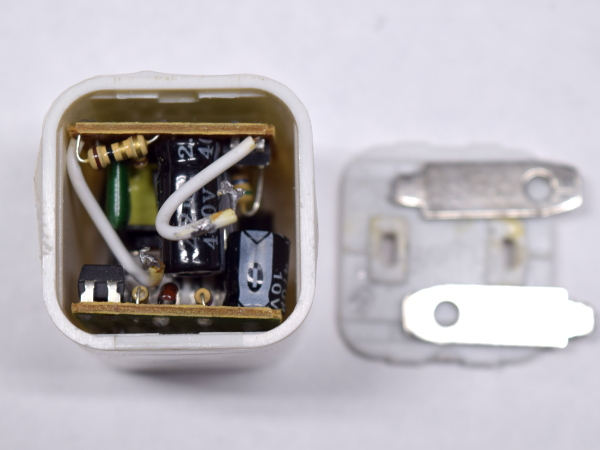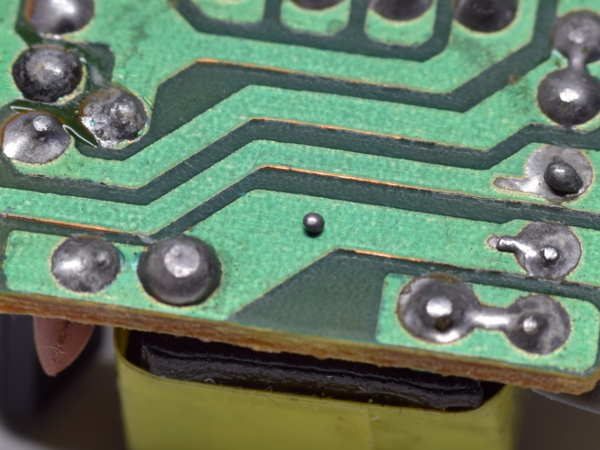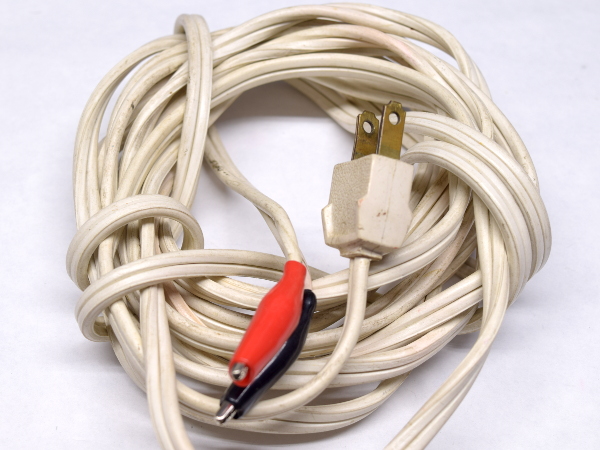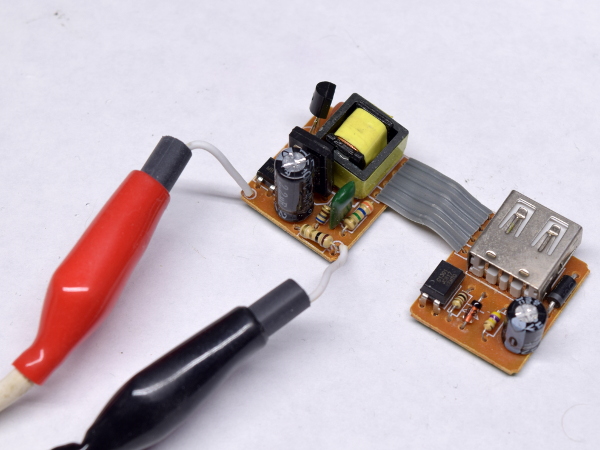Tom's Teardown: Two More Apple A1265 iPhone Charger Lookalikes
More A1265 Look-Alikes
In Apple 5W Adapter Knock-offs: The Colorful A1265 Tear-Down, we got a look at an example of poor design and manufacturing in a generic switching power supply priced around $1.50.
Today, I bring you two more samples of hopefully better quality. After all, they were $3 from two different vendors when I bought them in 2016. One of them is now delisted, while the other one is still sold by Cell Depot for $10 with a 33% one-star rating.
I suspect that most of these generic adapters are weekly Shenzhen specials, and I’d be surprised if there was any consistency in their quality if I tried to order another one. With that said, let’s get this probable horror show started.
MORE: Apple 5W Adapter Knock-offs: The Colorful A1265 Teardown
MORE: 10 Inexpensive Automotive USB Adapters, Tested
BDL1000 – Label
The first of these A1265 look-alikes is labeled as a BDL1000. It claims typical AC input ratings, a likely over-stated 1A output rating, and 5V nominal output voltage (plus or minus a suspiciously large 500mV tolerance). This is an ominous place to start from, coupled with the fact that there are no safety marks whatsoever.
I suppose we can at least give it credit for not giving us a false sense of security with fake marks.
Get Tom's Hardware's best news and in-depth reviews, straight to your inbox.
MORE: Apple 5W Adapter Knock-offs: The Colorful A1265 Teardown
MORE: 10 Inexpensive Automotive USB Adapters, Tested
BDL1000 – First Peek
While attempting to pry the BDL1000 open, weak solder joints between its wires and steel prongs came undone, allowing their smooth tapered tangs to slip out of the cap. With those prongs out of the way, I crammed a screwdriver in one of the holes and levered the cap’s tabs out of the enclosure. Between the two boards, we can see the input and output capacitors touching each other, which isn’t particularly good, even though the capacitors’ sleeves provide at least some insulation. One of the AC prongs also lands close to the output capacitor when the unit is closed.
It looks like the bottom of the barrel from our Colorful tear-down may have gotten deeper.
MORE: Apple 5W Adapter Knock-offs: The Colorful A1265 Teardown
MORE: 10 Inexpensive Automotive USB Adapters, Tested
BDL1000 – Splash
In a race to get solder to stick to the steel prong faster than the cap’s plastic or wire's insulation can melt, whoever soldered these wires applied big globs to the terminals and hoped for the best. Here, one glob attached the left wire to the prong, while most of the right wire's solder appears to have dripped onto the other, giving it a partial solder sleeve.
For the most part, attempting to solder directly onto steel isn’t a good idea; steel does not readily wet with tin or lead solder.
MORE: Apple 5W Adapter Knock-offs: The Colorful A1265 Teardown
MORE: 10 Inexpensive Automotive USB Adapters, Tested
BDL1000 – PCB Top
Apart from a layout shuffle, this appears to be fundamentally the same circuit as the Colorful adapters. You know you’re in jeopardy (safety-wise) the moment you spot an opto-isolator on the low-voltage side, which tells you that mains-referenced voltages are present across the ribbon cable.
One notable difference from the Colorful adapters is the presence of a 10Ω resistor between AC input and the bridge rectifier, clearly intended to act as a fuse should something go horribly wrong internally. I’d call that mildly comforting.
MORE: Apple 5W Adapter Knock-offs: The Colorful A1265 Teardown
MORE: 10 Inexpensive Automotive USB Adapters, Tested
BDL1000 – Similarities
Just like the Colorful, this adapter uses a generic no-name 1nF capacitor instead of a Y-class one for EMI suppression, an S8050 transistor to current-limit the oscillator, a 13003 transistor as the main switch, and off-brand 2.2µF 400V input and 470µF 10V output capacitors. Where it differs is a 5.1Ω (instead of 6.2Ω) current-limiting resistor, a 3.6MΩ (instead of 5.1MΩ) resistor for its startup bias, and a 4.2nF Mylar capacitor (instead of a ceramic one) on the feedback winding.
Value and layout tweaks aside, this really is the same circuit. With reduced current limit and startup bias resistors, today's sample may be able to deliver higher load current, assuming its transformer can handle it.
MORE: Apple 5W Adapter Knock-offs: The Colorful A1265 Teardown
MORE: 10 Inexpensive Automotive USB Adapters, Tested
BDL1000 – PCB Bottom
If there were any hopes that this adapter would fare better than the Colorful ones, consider them thoroughly crushed: creepage between the primary and low-voltage sides in the circled area is under 0.5mm. That's woefully inadequate, and guaranteed to fail my isolation test. Other areas highlighted in red don't fare much better.
Will this adapter have any redeeming qualities? I’m not holding my breath.
MORE: Apple 5W Adapter Knock-offs: The Colorful A1265 Teardown
MORE: 10 Inexpensive Automotive USB Adapters, Tested
BDL1000 – Tiny Solder Bead
In case you missed it, a tiny solder bead says hello. It isn’t stuck into flux or anything else, which means it is poised to break free and rattle around at any time. I’m really surprised it didn’t come loose during shipping. Since it is bigger than the clearance between some of the solder pads/traces, it could cause nasty, shocking, and potentially deadly surprises.
MORE: Apple 5W Adapter Knock-offs: The Colorful A1265 Teardown
MORE: 10 Inexpensive Automotive USB Adapters, Tested
The Wrong Tool For The Wrong Job
Since I ripped the prongs off while opening the adapter, I needed an alternate method to for powering it up. While I would not recommend having a mains-to-alligator-clips cable in a typical toolbox, this is one case where two wrongs can be used to make something right.
MORE: Apple 5W Adapter Knock-offs: The Colorful A1265 Teardown
MORE: 10 Inexpensive Automotive USB Adapters, Tested
Getting Ready To Go
While setting up the BDL1000 for load testing, I wasn’t comfortable with exposed alligator clip tips flopping around on the ends of flimsy wires. Conveniently enough, I happened to have shrink-wrap tubes of just the right size to fit snugly inside the silicone covers. Now we’re ready to get cooking with only the hazards of an exposed live PCB to worry about.
MORE: Apple 5W Adapter Knock-offs: The Colorful A1265 Teardown
MORE: 10 Inexpensive Automotive USB Adapters, Tested
Taking Precautions
Here comes the BDL1000 in its new temporary home, should anything "interesting" happen. We see 115V going in at less current than my new AC panel meter can register, 5.16V coming out under no load, no smoke, no light, and no bang. Since this adapter already failed the basic creepage visual inspection, my expectation bar is set very low. I’ll take whatever positive signs I can get!
MORE: Apple 5W Adapter Knock-offs: The Colorful A1265 Teardown










